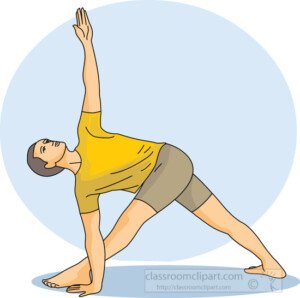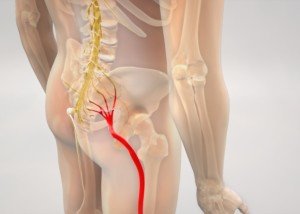
Sciatica is a cause of sudden attacks of severe pain that can shoot down the leg, often starting in the butt.
Cardio exercise is something that you should strongly consider if you’re determined to knock down your chances of ever developing sciatica.
This disorder is very common and involves pressure at some point along the higher portion of the sciatic nerve.
This major nerve extends down the buttocks, continuing down the upper leg and then lower leg.
Cardio Exercise and Sciatica
“Cardio exercise has the potential to indirectly limit or prevent sciatica,” says Dr. Jeff Langmaid, DC, founder/owner of The Evidence Based Chiropractor, LLC, in Tampa, FLA, a research-based marketing and practice growth company that serves thousands of chiropractors all over the world.
He continues: “If you have good cardiovascular fitness, chances are you are maintaining a healthy weight and are staying active.
“Both of those are key contributors to not only preventing sciatica, but overall health and wellness.”
Sciatica does not just happen.
The key is consistent, structured exercise, not irregular or inconsistent bouts of physical activity.
- This means that the periodic pickup basketball games do not count.
- Neither does housework.
Dr. Langmaid continues, “Additionally, many cardiovascular exercises can contribute to core strength and stability.
“For instance, a seated rowing machine is a cardiovascular activity, but provides a strength training component with it that can go a long way towards preventing sciatic pain.
“There are also certain cardio exercises and activities that can increase our flexibility, and the combination of core strength, flexibility and cardiovascular endurance is best together for preventing or limiting sciatica.”
Proper Use of a Treadmill
Walking is a form of aerobic exercise — when done with enough intensity to get the heart rate elevated.
If you use a treadmill, do not hold on. This interferes with natural spinal alignment when walking.

Shutterstock/Khakimullin Aleksandr
When the spine is concerned, you do not want anything less than correct biomechanics when conducting cardiovascular exercise.
If you feel you’re going to fall off unless you hold on, then slow the speed or lower the incline.
Swing your arms so that your upper and lower body move the way nature intended.
In addition to doing consistent cardio activity to help prevent sciatica, you should employ the exercises depicted below.

Freepik.com/yanalya












































